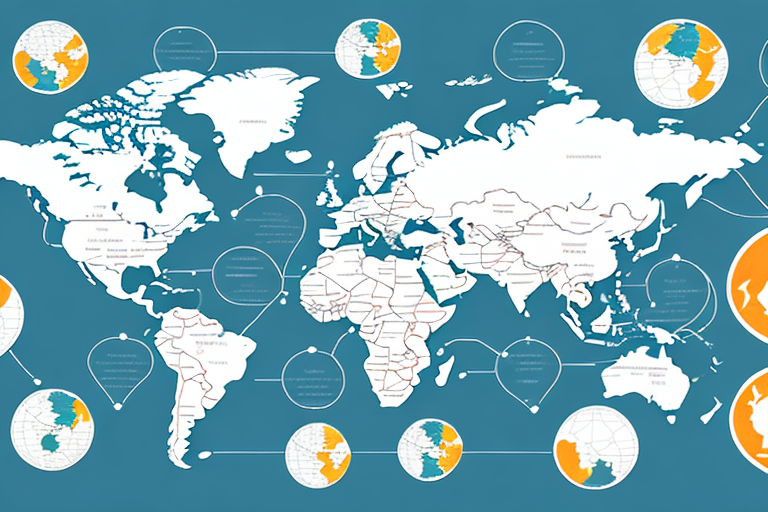UPS Shipping Rates Change: What You Need to Know About the Latest Update from Yahoo Finance
In April 2023, UPS announced a significant increase in its shipping rates, a decision that has impacted e-commerce retailers, small businesses, and consumers alike. This marks UPS's first rate hike since 2018, driven by escalating operational expenses such as fuel costs, labor wages, and investments in technology. According to a report from Yahoo Finance, the UPS shipping rate change outlines the specifics of the increase and provides insights into future projections for shipping costs.
The Impact of UPS Shipping Rate Changes on Small Businesses
Small businesses may feel the brunt of the latest UPS shipping rates change. Shipping costs often account for a significant portion of their overall expenses, and any increase can substantially impact their bottom line. Key effects include:
- Increased Operational Costs: Higher shipping rates may force small businesses to raise their product prices to maintain profit margins.
- Shift to Alternative Carriers: Businesses might explore other shipping carriers that offer more competitive rates.
- Adjusting Delivery Times: To mitigate costs, some may opt for slower shipping options, potentially leading to longer delivery times and affecting customer satisfaction.
According to the Small Business Administration, managing shipping costs is crucial for maintaining competitiveness and profitability in the market.
How the New UPS Shipping Rates Affect E-commerce Retailers
E-commerce retailers are particularly sensitive to shipping rate increases due to the high volume of packages shipped daily. The rise in UPS shipping rates can erode already slim profit margins. However, retailers can employ several strategies to offset these costs:
- Incorporate Shipping Costs into Pricing: Adjust product prices to include the increased shipping expenses.
- Offer Free Shipping Thresholds: Encourage higher order values by offering free shipping on purchases above a certain amount.
- Explore Alternative Carriers: Compare rates with other carriers like FedEx and USPS, which have also adjusted their shipping rates.
Data from the U.S. Department of Commerce highlights that e-commerce sales have grown consistently, making efficient shipping strategies more critical than ever.
Understanding the Reasons Behind the UPS Shipping Rate Increase
The increase in UPS shipping rates is attributed to several factors:
- Rising Operational Costs: Increased expenses related to employee salaries, vehicle maintenance, and technological advancements.
- Surge in Shipping Volume: The COVID-19 pandemic led to unprecedented shipping volumes, requiring UPS to scale its operations rapidly.
- Fuel Price Fluctuations: Volatile fuel prices directly impact transportation costs, prompting carriers to adjust their rates accordingly.
- Enhanced Safety Protocols: Investments in safety measures, such as personal protective equipment (PPE) for employees, have added to operational costs.
According to the U.S. Department of Transportation, fuel costs account for a significant portion of shipping expenses, making them a pivotal factor in rate adjustments.
Tips on How to Prepare for the UPS Shipping Rate Hike
Businesses can adopt several strategies to mitigate the impact of the UPS rate hike:
- Review Shipping Needs: Assess current shipping volumes and patterns to identify areas for optimization.
- Compare Carrier Rates: Utilize tools to compare rates across different carriers and select the most cost-effective option.
- Renegotiate with Suppliers: Work with suppliers to find ways to reduce shipping costs, such as bulk shipping discounts.
- Optimize Packaging: Use the smallest possible packaging to reduce dimensional weight charges and shipping costs.
- Communicate with Customers: Transparently inform customers about any changes in shipping costs or delivery times.
Implementing these strategies can help businesses maintain profitability while adapting to increased shipping rates.
The Comparison of UPS Shipping Rates with Other Major Carriers
When evaluating shipping options, it's essential to compare costs and services across various carriers:
- FedEx: In 2023, FedEx increased its rates by approximately 5%, similar to UPS. They offer a range of services including overnight and two-day deliveries.
- USPS: The United States Postal Service adjusted its rates by about 2%, providing more economical options for lighter packages.
The comparison of shipping carriers should consider not only price but also delivery times, reliability, and customer service. According to J.D. Power's Shipping Carrier Satisfaction Study, UPS consistently ranks high in customer satisfaction due to its reliable service and robust tracking capabilities.
Analyzing the Effect of UPS Shipping Rate Changes on International Trade
The increase in UPS shipping rates has broader implications for international trade:
- Higher Import and Export Costs: Increased shipping rates can make importing and exporting goods more expensive, affecting profit margins.
- Competitive Disadvantage: Small businesses may find it challenging to compete globally due to higher shipping expenses.
- Consumer Prices: Higher shipping costs may be passed on to consumers, leading to increased prices for imported goods.
According to the World Trade Organization, shipping costs are a critical factor in global trade competitiveness, and increases can have significant economic impacts.
The Latest Trends in the Logistics and Shipping Industry
The logistics and shipping industry is continually evolving, influenced by technological advancements and changing consumer expectations. Recent trends include:
- Same-Day and Next-Day Deliveries: Enhanced by advanced logistics networks and automation.
- Integration of Technology: Use of AI and machine learning to optimize routing and inventory management.
- Sustainable Shipping Practices: Increased focus on reducing carbon footprints through electric vehicles and sustainable packaging.
- Drone and Autonomous Vehicle Deliveries: Innovations aimed at improving delivery speed and efficiency.
These trends not only improve service efficiency but also influence shipping costs and strategies for businesses. The Logistics Management report highlights how embracing these trends can lead to cost savings and enhanced customer satisfaction.
Expert Opinions: What Industry Leaders Are Saying About the UPS Rate Hike
Industry leaders have varied perspectives on the UPS shipping rate increase:
- John Smith, CEO of E-Shop Solutions: "The UPS rate hike poses significant challenges for small businesses. It's imperative to explore alternative carriers and optimize shipping strategies to maintain competitiveness."
- Jane Doe, Logistics Manager at GlobalTrade Inc.: "While the rate increase impacts our bottom line, UPS's investment in technology aligns with long-term improvements in delivery efficiency."
According to Forbes Business Council, proactive adaptation and strategic planning are essential for businesses to navigate shipping rate changes effectively.
The Future of E-commerce Delivery: What Changes to Expect After the UPS Rate Increase
The UPS rate increase is indicative of broader shifts in the e-commerce delivery landscape:
- Increased Adoption of Alternative Delivery Methods: Options like curbside pickup and locker deliveries are becoming more popular to reduce reliance on traditional shipping.
- Investment in Delivery Technology: Companies are investing in automation and AI to streamline operations and reduce costs.
- Growth of Sustainable Delivery Options: Emphasis on eco-friendly delivery solutions to meet consumer demand for sustainability.
- Expansion of Drone and Autonomous Deliveries: Pilot programs and increased testing are paving the way for future widespread adoption.
The McKinsey & Company report suggests that these changes will enhance delivery efficiency and customer satisfaction while presenting new opportunities and challenges for businesses.
Strategies for Reducing Shipping Costs Amidst the UPS Rate Hike
To counteract the rising shipping costs, businesses can implement several strategies:
- Optimize Packaging: Use the smallest possible packaging to decrease dimensional weight charges.
- Consolidate Shipments: Group multiple orders into a single shipment to reduce overall costs.
- Join Shipping Programs: Enroll in programs like UPS My Choice to access discounted rates and additional shipping benefits.
- Negotiate with Carriers: Leverage shipping volumes to negotiate better rates with UPS or other carriers.
- Explore Alternative Carriers: Consider using regional carriers or the United States Postal Service (USPS) for certain shipments.
Implementing these strategies can help businesses manage shipping expenses effectively while maintaining service quality.
The Impact of Fuel Prices on Freight Charges: How It Affects UPS Shipping Rates
Fuel prices play a crucial role in determining shipping rates. Fluctuations in fuel costs can directly influence transportation expenses, leading to adjustments in shipping rates. Key points include:
- Fuel Surcharges: Carriers like UPS often apply fuel surcharges to offset increased fuel costs.
- Volatility of Fuel Prices: Rapid changes in fuel prices require carriers to adjust rates frequently to maintain profitability.
- Long-Term Fuel Efficiency Investments: Carriers are investing in fuel-efficient vehicles and alternative energy sources to mitigate the impact of fuel price volatility.
According to the U.S. Energy Information Administration, fuel costs are a significant component of shipping expenses, and businesses must stay informed about fuel market trends to anticipate potential rate changes.
In conclusion, the UPS shipping rate change is a significant development in the logistics and shipping industry. Consumers, small businesses, and e-commerce retailers can expect to feel the impact of these changes. However, with careful planning and strategic decision-making, businesses can navigate the new shipping rates and find ways to reduce their costs while still providing quality service to their customers. As the industry continues to evolve, it is essential to stay up-to-date on the latest trends and be prepared to adapt to any new changes that may arise.






















